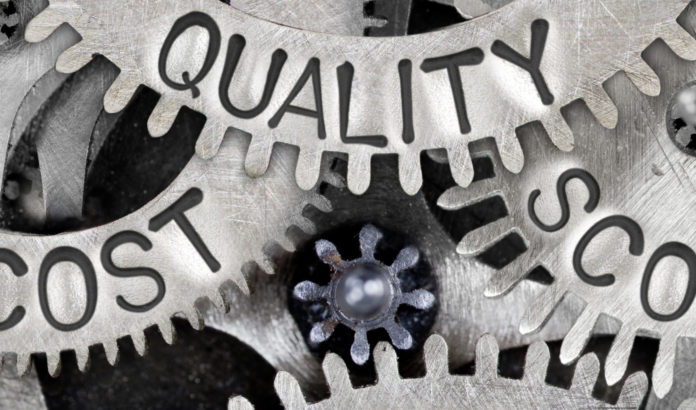21 Mar 2019
I’ve served as outside patent counsel for tech companies of all sizes, and have found that there are both benefits and negative (usually unintended) consequences to fixed-fee patent budgets.
Many companies have their own fixed-fee schedule, which is basically a menu that specifies the amount of money that the company will pay their outside law firm for every discrete task in the life of a patent application, such as drafting a patent application or responding to an office action.
In fact, almost all big tech companies with large patent portfolios (for example, filing hundreds of patent applications per year) have fixed-fee schedules. This is often necessary to efficiently control costs for high-volume patent portfolios.
Although fixed-fee budgets seem to be a permanent fixture for big tech companies, small to mid-sized tech companies may need to take a different approach. For smaller companies in particular, being overly rigid about your spending on individual tasks in the life of a patent application can actually increase costs, and drive down quality too.
Let’s take a closer look at why.

THE BENEFITS OF FIXED-FEE SCHEDULES
Depending on the complexity of your invention and a few other key factors, the cost of filing a patent application can vary. In light of this, a fixed-fee schedule can offer you the following benefits:
- Keep costs under control: Fixed fees allow you to know upfront what you’ll spend on each patent application, which makes budgeting much easier.
- Cost certainty: Because you know exactly what you’re paying, you aren’t going to get hit by a surprise invoice at the end of the project.
- Greater predictability: Startups, in particular, can benefit from knowing what costs they’ll incur upfront, as they often have fixed cash resources.
- Incentivize efficiency: If your attorney isn’t paid by the hour, he or she will have no incentive to prolong the process just to rack up billable hours.
- More effective communication: Have an important question to ask your lawyer? With fixed-fee schedules, you won’t have to worry about getting charged for each email or call.
- Pay for the value of the work, and not the amount of time it took to complete the work.
But while fixed-fee schedules come with many benefits, they aren’t right for every company or every project.
WHEN SHOULD WE USE FIXED-FEE SCHEDULES?
Fixed-fee schedules are especially ideal for “routine,” predictable work. Examples might include filing a national stage application based on a PCT application, filing an information disclosure statement (IDS) to cite references from a foreign case, etc.
WHO SHOULD USE FIXED-FEE SCHEDULES?
The rise of fixed-fee schedules coincides with efforts to “commoditize” the patent process. And this makes sense for certain companies — specifically, larger ones with a robust budget for patent filings.
Why? If you’re a huge tech company filing hundreds of patent applications per year, the vast majority (all?) of those applications are being filed for volume, just as a defensive measure. That’s because it’s rare for any individual patent application to have standout value for big tech companies. So it makes sense to treat your patent applications as widgets and to use a fixed-fee schedule to set a predictable cost of manufacturing each widget.
Also, when you’re filing such a huge volume of patent applications, a fixed fee schedule becomes a practical necessity. The administrative cost of managing budgets in for each individual case could be significant, so it just makes sense to streamline.
THE DRAWBACKS OF FIXED-FEE SCHEDULES
For smaller companies that are filing fewer patent applications per year, there are smaller administrative costs associated with managing budgets for lower-volume patent portfolios. In other words, a fixed-fee schedule doesn’t really produce more efficiency over time.
Fixed-fee schedules can actually compromise the quality of your patent applications and (perhaps counter-intuitively) increase the overall cost. Here are a few reasons why:
1. ATTORNEYS ARE INCENTIVIZED TO PUT IN MINIMAL EFFORT
With a fixed-fee schedule, attorneys are incentivized to complete their work with as little effort as possible, because they get paid the same regardless. This is obviously not an ideal scenario for you, the client.
By contrast, a more flexible fee schedule can encourage attorneys to put in additional effort when appropriate. A good attorney will explain the value that they can add through the additional effort, and let you (the client) decide beforehand whether the extra cost is justified.
One common fear among companies is that their attorney might draw out the process just to charge more billable hours. But if this is your concern then I’m afraid you have a deeper problem — you should be able to trust your patent counsel and know that they have your best interests in mind. A good patent attorney should adapt their level of effort (and, by extension, the cost) to the needs of each specific case. But with a fixed-fee schedule, your attorney won’t be able to do this.
2. INTRODUCE INEFFICIENCIES WHEN INVENTIONS ARE RELATED
When evaluating an invention disclosure record (IDR), attorneys often have to use some discretion to determine how many distinct inventions should be claimed independently, and therefore how many patent applications should be filed.
Under a fixed-fee schedule, when a single IDR contains two distinct inventions, the company typically ends up paying for two full patent applications.
But because the two inventions are related, the two patent applications can often be drafted with less effort (as compared to two unrelated applications). In this case, a more flexible schedule would help your company to enjoy cost savings.
For example, when you have an “omnibus” specification for five inventions, you shouldn’t pay for five separate patent applications. But companies often end up doing this because their fixed-fee schedule offers them no price flexibility.
3. LESS EFFECTIVE OFFICE ACTION RESPONSES
When responding to office actions under a fixed-fee schedule, your outside counsel will tailor their effort to the fixed-fee budget. This often leads to less effective responses — which means more office actions and higher overall costs.
As one example, when the attorney is considering three strong arguments in responding to a rejection, they might only end up making one of the three arguments because they don’t have the time budget (under the fixed-fee schedule) to make all three.
As another example, the attorney might not have the time budget (under the fixed-fee schedule) to analyze the specification thoroughly and make smart, strategic amendments.
In this context, a better approach is to have flexible budgets so that your patent counsel can adapt their effort as needed. With competent counsel, this will actually save you money over time.
To show one example of how you could save money, here’s how the numbers might pan out:
- In a fixed-fee scenario:
- You pay $2,500 to respond to each office action.
- In the long run, you might pay $5,000 (= 2 x $2,500) over 12 months responding to two office actions (because the first one was ineffective).
- In a flexible-fee scenario:
- You pay $3,500 to respond to one office action, with stronger arguments or smarter amendments.
- In the long run, you might pay $3,500 (= 1 x $3,500) over 6 months responding to one office action.
As the example shows, although the flexible-fee approach may seem more expensive, you actually end up enjoying greater cost savings and obtaining an issued patent more quickly than if you’d used a fixed-fee schedule.
WHAT FEE STRUCTURE IS RIGHT FOR YOU?
Whether you used fixed-fee or flexible-fee structures, you should also have some degree of flexibility in your patent budgets. Overly rigid fee schedules can drive up costs and drive down quality — regardless of the size of your company.
But regardless of fee structure, you want to build a trusting relationship with your patent counsel. Your patent attorney should be a close partner in helping you achieve your business goals within budget.
At Henry Patent Law Firm, we typically use flexible-fee structures, but we collaborate closely with our clients to work out the best fee structure for their needs. Contact us now to learn more.

Michael K. Henry, Ph.D.
Michael K. Henry, Ph.D., is a principal and the firm’s founding member. He specializes in creating comprehensive, growth-oriented IP strategies for early-stage tech companies.

